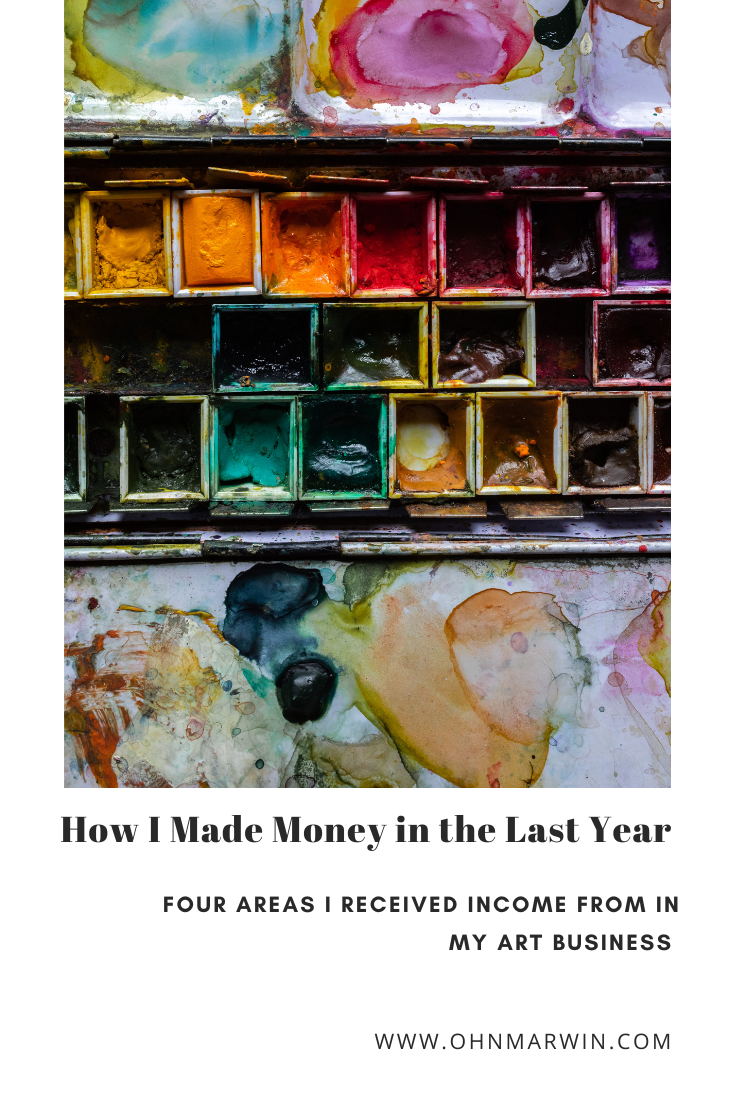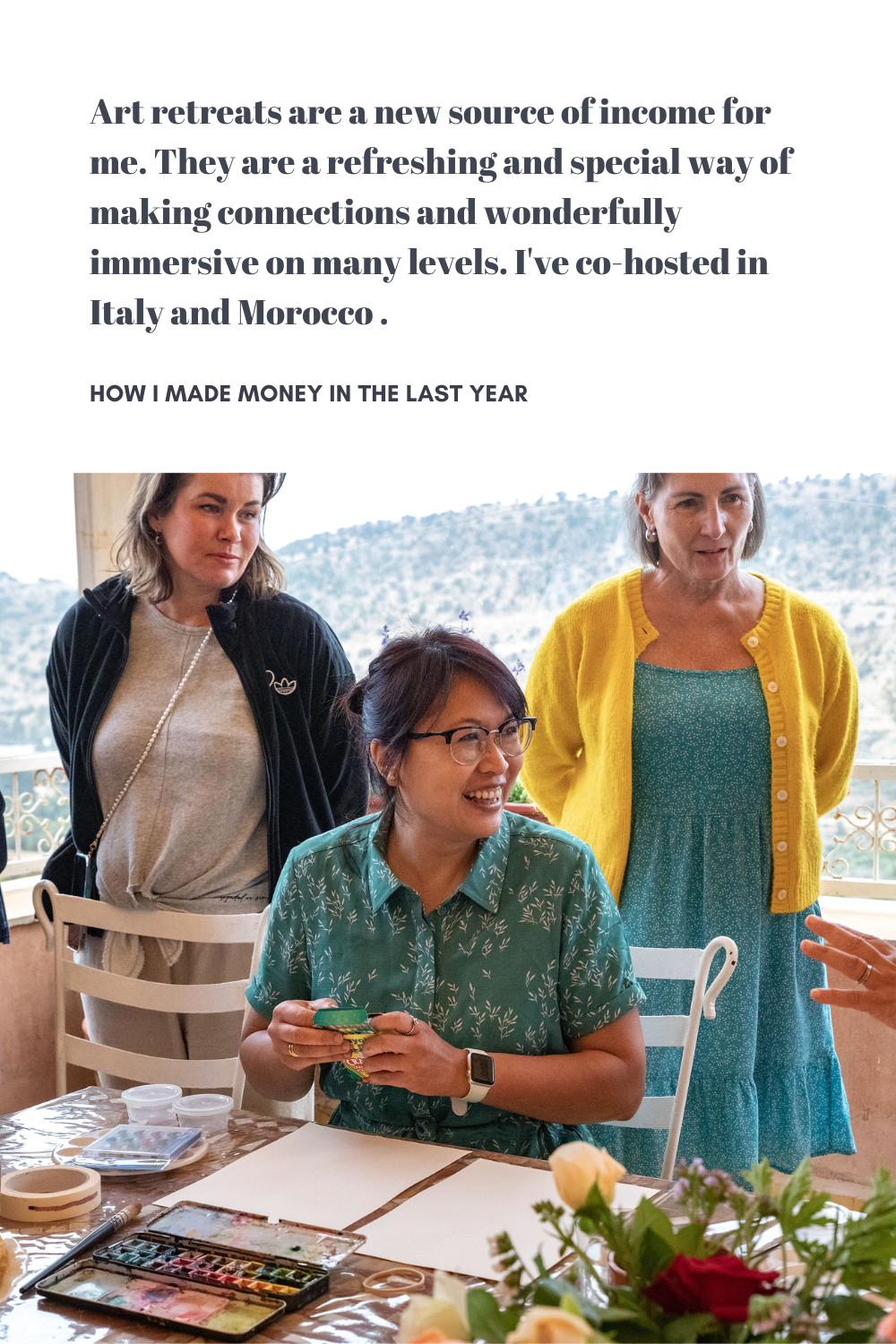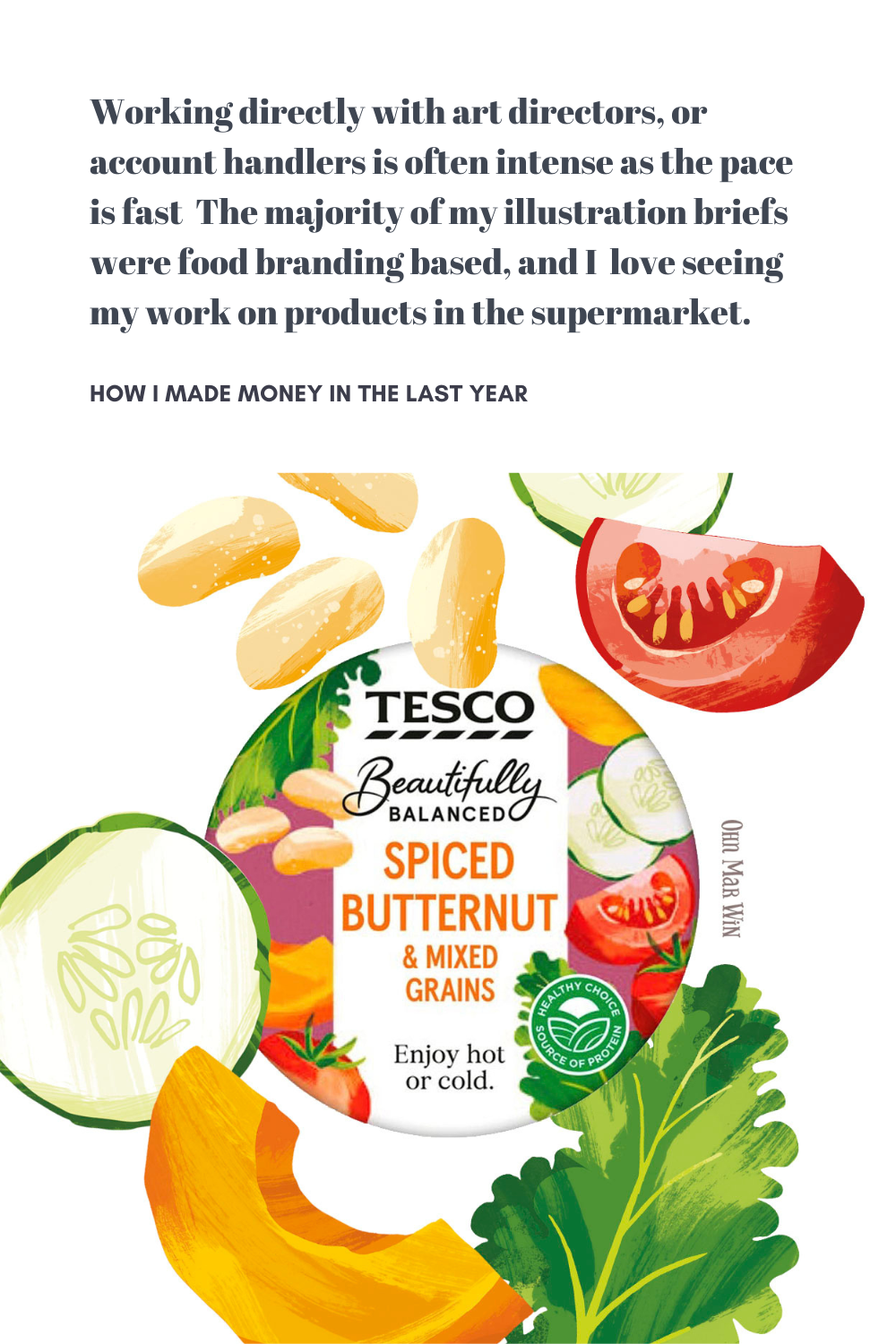From day one of embarking on this career, I wanted to live comfortably using the income from my art and illustration. Your definition of comfortable and my definition may be different, but I think many of us aspire to have a sustainable and successful art career. I’ve been earning a six-figure income for several years, consistently increasing my earnings each year since I set up my art business seven years ago.
I wanted to write a blog post about my income as it’s important to me as a teacher to be very candid and realistic with what I share. I know that many people are interested in this type of information, especially those starting out on this career path, but it's often very difficult to find as it’s seldom discussed openly. So I thought I’d make a little financial snapshot of the last year so people could see what it's like for one established artist.
The last tax year (April to April in the UK) has been the most successful yet in terms of net revenue. However, my expenditure has also increased because as my business grows, I more often hire professionals for their expertise in order to save myself time and headache.
This year there were four main areas I received income from in my art business. The break down looks like this:
Brand Collabs 1%
Licensing Images 7%
Art Retreat 8%
Illustration 31%
Online Teaching 53%
Brand Collabs
I almost didn’t include these, as the income really didn't really amount to very much. This includes two collaborations—creating Reels on Instagram with a well known art brand, and a YouTube video tutorial special feature for a different brand. Both were pleasant experiences.
Licensing Images
This has been a nice source of income as it has been totally passive. Passive income is where you do a lot of work up front to create a digital product, a course, or content that you earn money from over and over again. I talk more about it in my post Why Passive Income is Preferable for Artists. I grouped the income from stock images, art licensing (from gift products and greetings cards), and my Spoonflower shop, as these are all images I’ve already created and which have been in my portfolio for several years (as opposed to commissioned work—see ‘Illustration’ below). Every fortnight, month, or quarter, depending on the platform or licensing partner, I receive nice deposits in my PayPal or bank account for which I’m genuinely grateful. The income from these areas has decreased slightly this year, which is understandable as I’m not actively adding images or pursuing art licensing at this time.
Art Retreat(s)
This is a new source of income, although before the pandemic I had hosted a number of less involved, three-hour in-person workshops. I hosted my first art retreat with Victoria Johnson in Italy with Uptrek. As a creator and teacher of online classes, the week-long art retreat in Le Marche, Italy, was wonderfully immersive on many levels. And after the two years of non-existent travel during the worst of the pandemic, it was an especially refreshing and very special way of making connections and being present.
Having a co-host meant we split the fee that was offered to retreat leaders. This tradeoff was worth it as it meant we could share the responsibility of teaching and interacting with the guests over the seven days. Since then Victoria and I have co-hosted another art retreat in Morocco again with Uptrek.
Illustration
To clarify, the projects I worked on in this category were commissioned specially by the client for a specific purpose. The briefs I worked on ranged from a book about dumplings, brand packaging for Tesco and website icons for a clothing brand. Working directly with art directors, senior designers or account handlers is often intense, as the pace is fast and deadlines are narrow. There's a lot of back-and-forth, starting with sketches before moving onto color roughs, and then refining where there needs to be more contrast, etc, plus tweaks here and there. Generally I include two rounds of feedback or amendments in my contract, which is often enough before artworks are signed off. The majority of my illustration briefs were food branding based, and I do love seeing my work on products in the supermarket further down the line.
Income from commissioned Illustration has hovered around a third of my earnings for several years, although it used to be more in the earlier part of my career.
Online Teaching
I’ve been teaching on the Skillshare platform since the summer of 2016, when I launched my first Skillshare class called ‘Design Your Favorite Fruity Recipe’, a tutorial on creating an illustrated recipe from line sketches. Since then I have become a Top Teacher on the platform, having created 27 classes with over 140,000 students.
In the last tax year I released two Skillshare classes. The first was Transition into Illustration: Breaking Into The Industry, where I revealed my entire illustration story, sharing my personal insights and experiences to give a realistic understanding of what to expect.
The other class was Create Contrast With Watercolor and Procreate. Where students could improve their working knowledge of contrast in their art, by applying basic principles.
There is usually an uptick in new students when I release new classes, and ‘Transition into Illustration’ was especially popular on its launch. I’d say the income created from teaching on this platform is ‘semi passive’, as there is considerable work behind the scenes to keep this many classes relevant and seen by potential new students. The proportion of revenue from online teaching has increased year-on-year, and in the last two years it's hovered at just over 50%.
I mentioned that outgoings or expenses have also increased in the last year, partly due to outsourcing professionals in these areas:
Editing of class scripts and blog posts : Henry Cordes
Filming and editing my two Skillshare classes : Angelika Winnett and Diana Kenyeres
Professional photography for branding, blog and pack shots: Nat Aubry
Designer for page layout and general artwork : Barney Bryant
Furthermore large slices of my outgoings were spent on equipment purchases, such as a new iMac, iPhone 13 and Canvas clamp for filming Reels and classes. I was also in a position to donate substantial amounts to various charities helping those affected by the military coup in Burma in the last year.
If you are still at the beginning of your creative career, you mustn’t get disheartened if your portfolio isn’t the complete package yet, and please don't worry about taking a few years to get it into shape. It's taken me nine long years to ‘retrain’ and then build a business that provides a comfortable income from my art. The bottom line is that gaining traction takes a lot of intentional effort over time, belief in your abilities, with much happening outside of your comfort zone. I’m only one of thousands of illustrators who are making a living from their art, and we are all at different stages, with different financial needs. I have two kids and can’t rely on a partner to pick up the slack. We all have different experiences of the industry.
I’d like to be clear about the reason I’m sharing all this. It would be nice to think I’m a positive example and show people that it really is possible to make a good living as an independent artist in business. Someone reading this early in their journey might be mentally comparing themselves to me and feeling down about where they are, but the truth is that I struggled (quite a lot) at the beginning too. People are often overwhelmed with unrealistic images and blurbs in their social media feeds, and it's easy to get warped ideas about what real life is like for the creators behind those posts.
























































